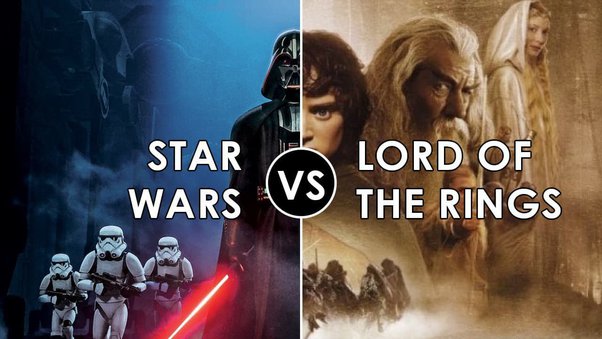The Hidden Influence of World War II on “Star Wars” and “The Lord of the Rings”
From the battlefields of World War II to the fictional realms of “Star Wars” and “The Lord of the Rings,” the echoes of history resonate in unexpected ways. Explore how the turmoil of the 20th century shaped two beloved sagas, revealing surprising parallels and timeless themes.
As fans celebrate “Star Wars” on May the 4th, it’s worth delving into the unlikely connection between this iconic space opera and the tumultuous events of World War II. Similarly, J.R.R. Tolkien’s epic fantasy series, “The Lord of the Rings,” bears the imprint of its author’s experiences during the war. Maj. Warren Lewis, brother to renowned author C.S. Lewis, once drew striking parallels between Tolkien’s work and the geopolitical landscape of the time. Let’s unravel the fascinating ties between these tales and the global conflict that inspired them.
Key Points:
-
“Star Wars”: George Lucas’s Galactic Epic
- George Lucas, the visionary behind “Star Wars,” crafted a sprawling saga set in a distant galaxy, far, far away.
- While Lucas drew inspiration from various mythologies and storytelling traditions, World War II undoubtedly left its mark on his creation.
- Themes of rebellion against tyranny, the struggle for freedom, and the clash between good and evil mirror the ideological struggles of the 20th century.
-
The Influence of World War II:
- The imagery of “Star Wars” reflects the visual aesthetic of World War II, with Rebel starfighters resembling WWII aircraft and Imperial forces evoking fascist regimes.
- The Rebel Alliance’s fight against the oppressive Galactic Empire resonates with the spirit of resistance movements during the war, such as the French Resistance or the Polish Home Army.
- Characters like Darth Vader, with his menacing presence and authoritarian rule, draw parallels to historical figures like Adolf Hitler or Joseph Stalin, whose actions shaped the course of the war and its aftermath.
-
“The Lord of the Rings”: Tolkien’s Epic Allegory
- J.R.R. Tolkien’s “The Lord of the Rings” is often interpreted as an allegory for the events of the 20th century, including World War II.
- Maj. Warren Lewis’s observation, comparing elements of Tolkien’s world to real-world nations and figures, highlights the allegorical nature of the story.
- The struggle against the dark lord Sauron can be seen as a metaphor for the fight against totalitarian regimes, with the various races of Middle-earth uniting against a common enemy.
-
Tolkien’s Reflections on War:
- Tolkien, a veteran of World War I, infused his work with his own reflections on the nature of conflict, heroism, and the enduring power of hope.
- The hobbits’ journey from the peaceful Shire to the fires of Mount Doom reflects the upheaval experienced by millions during the war, as ordinary people found themselves thrust into extraordinary circumstances.
- Themes of friendship, sacrifice, and resilience resonate deeply with audiences, offering solace and inspiration in the face of adversity.
-
Legacy and Resonance:
- Decades after their creation, “Star Wars” and “The Lord of the Rings” continue to captivate audiences around the world, transcending generational boundaries.
- The enduring popularity of these sagas speaks to their timeless appeal and universal themes, which resonate with audiences of all backgrounds.
- As we reflect on the legacy of World War II and its impact on popular culture, we’re reminded of the power of storytelling to illuminate the human experience and inspire hope for a better future.
Conclusion:
As fans immerse themselves in the rich tapestry of “Star Wars” and “The Lord of the Rings,” they discover echoes of history woven into the fabric of these beloved sagas. From the battles of World War II to the farthest reaches of the galaxy and the depths of Middle-earth, the influence of real-world events is palpable. As we celebrate these timeless tales on May the 4th and beyond, let us remember the resilience of the human spirit and the enduring power of storytelling to transcend even the darkest of times.


